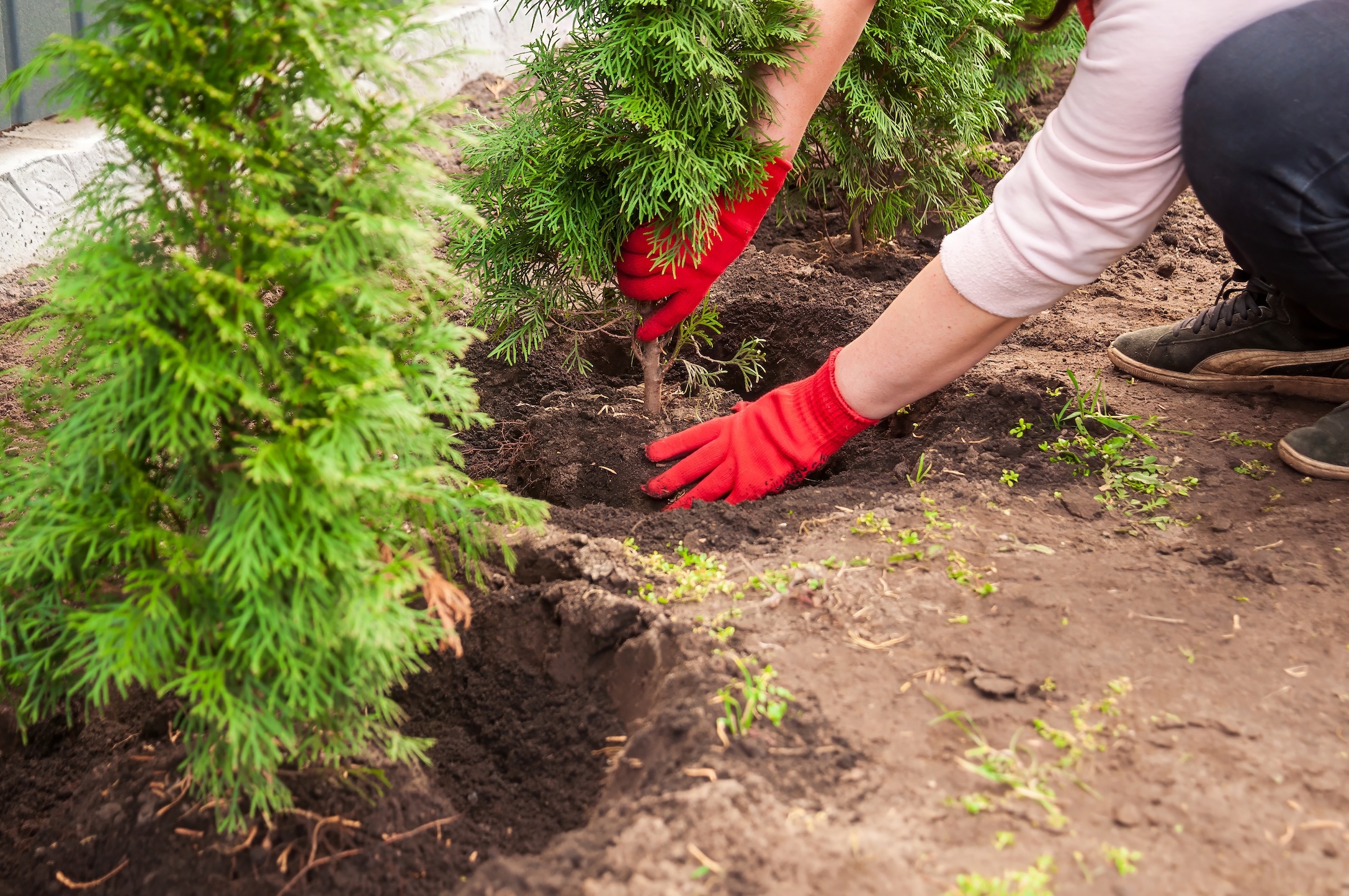Choosing and Planting Evergreens
Whether you're a seasoned gardener or just starting out, this helpful guide to planting evergreens offers valuable insights and practical tips to help you create a vibrant and resilient landscape that will thrive year-round.

Evergreen trees and shrubs add year-round greenery to your landscape and make welcome additions to your environment. There are several important factors to take into consideration before you plant. First and foremost, choose the right tree for the right location.
You’ll need to carefully consider the growing habits of the trees and shrubs you want to plant. Some grow fast, some more slowly. Consider the shape of the tree and the texture of the leaves/needles. Not all evergreens are green. Some turn yellow in spring due to new growth, some have blue needles, and some remain yellow all year. Make sure that the varieties you choose are suitable for growing in your climate and soil conditions. Check with your local nursery and garden center for advice and information of various species.
Location
Determine the space of the area you want the evergreen to fill. Pyramid-shaped evergreens like spruce, fir, and arborvitae can cover a 30-foot circle when mature. Many loose lower branches as they mature, leaving an open area where grass may be difficult to grow. Smaller-scaled trees like upright junipers and arborvitae are excellent choices for residential lots. Shrubs may require careful spacing and planning. Some can spread up to six feet in a few years, others require pruning to keep them at the desired height and width. Remember that the faster-growing trees and shrubs are often the most vulnerable to storm damage and diseases.
Next, make sure your soil is appropriate for the type of evergreen you choose. There are certain varieties that grow better in slightly acidic soil, some that can adapt to sandy soil and some that will not tolerate heavy clay soils. In general, evergreens prefer a soil pH level under 7. Your local county extension office can help you complete an analysis with soil samples. Home soil test kits can be purchased and give you an accurate reading in as little as 20 minutes.
Because of the extreme cold winters in the upper Great Lakes region, take the cold-hardiness of the evergreen into account when selecting. Extreme temperature fluctuations can result in die-back of branch ends and browning of foliage.
Light is also a factor in choosing a location. Most evergreens prefer full sun but some can tolerate partial sun (arborvitae, balsam fir, Douglas fir), or shade (Canada hemlock, Japanese yew).
If you decide to plant your evergreens near to areas where they will be exposed to road and sidewalk salt, choose varieties that are more salt-tolerant. Examples include: common juniper, eastern red cedar, Scotch pine, jack pine, mugo pine and Ponderosa pine.
Colorado Blue Spruce are popular trees in this area but after 20 years, may suffer because of the severe winter climate. Smaller, dwarf varieties are more likely to withstand the elements.
Planting your trees
If you are looking to plant mature-sized trees, the best option is to let your nursery plant and position the trees for you. Trees planted this way are usually guaranteed for a period of time and offer a safer return on your investment than doing it yourself.
You can plant in the spring, summer or early fall. Planting as early as possible will give the tree more time to get established before the ground freezes. Early in the season, there is a much greater variety to choose from in the local nursery. Planting too late in the fall is not recommended because they will not be able to take up much-needed water if the ground freezes before they have time to establish themselves. Keeping their needles year-round means that the trees lose water through the needles year-round, so watering is vital.
Make sure to call your local utility company or Digger’s Hotline before decide to dig anywhere in your landscape.
Trees can come in many different forms, from bare-root saplings to easily-manageable potted specimens, to large balled-and-burlapped trees. Dig a hole as deep as the height of the root ball, and at least a foot wider than the width. If the plant is potted, turn it on its side and carefully slit the pot and remove the root. Untangle or cut to loosen any spiral roots to encourage root growth. Fill the hole with soil and tamp it down well. Balled and burlapped trees have unique planting requirements. The University of Minnesota Extension has an excellent guide on planting the type of tree for your site. You can access it by clicking here: www.Extension.UMN.edu
After your tree is planted, keeping it well watered is vital. Keep newly-planted trees and shrubs watered frequently until the ground freezes hard. Make sure that the tree gets a good soaking at least once a week.
Mulching
In a native forest, evergreen trees are mulched by their own fallen needles and forest debris. This richly-mulched, moist soil protects against sudden temperature changes. Copying aspects of this eco-system will help keep your evergreens healthy. Apply mulch 3-4 inches deep and a few inches away from the trunk. Mulch with wood chips, shredded bark, straw, peat moss or seasoned compost, but do not lay plastic sheeting under the mulch. Doing so will not allow moisture to enter the soil. A permeable landscape cloth will keep weeds at bay while allowing water to penetrate to the roots.
Fertilization
In general, evergreens need less fertilizer than other plants. You can fertilize a tree if you need to stimulate growth, but if growth rate and needle color are normal, fertilization is not necessary. Trees that are planted in less than desirable sites (such as sandy or clay soil) may benefit from fertilization.












